By: Joe Holz, Director of Sales | Originally Posted: Feb. 10, 2016 | Updated: May 25, 2022
____________________________________________________________________________________________
Every Pond or lake has several different zones that divide the water column from top to bottom and side to side. These zones consist of the Littoral Zone, Limnetic Zone, Profundal Zone, Euphotic Zone, and Benthic Zone.
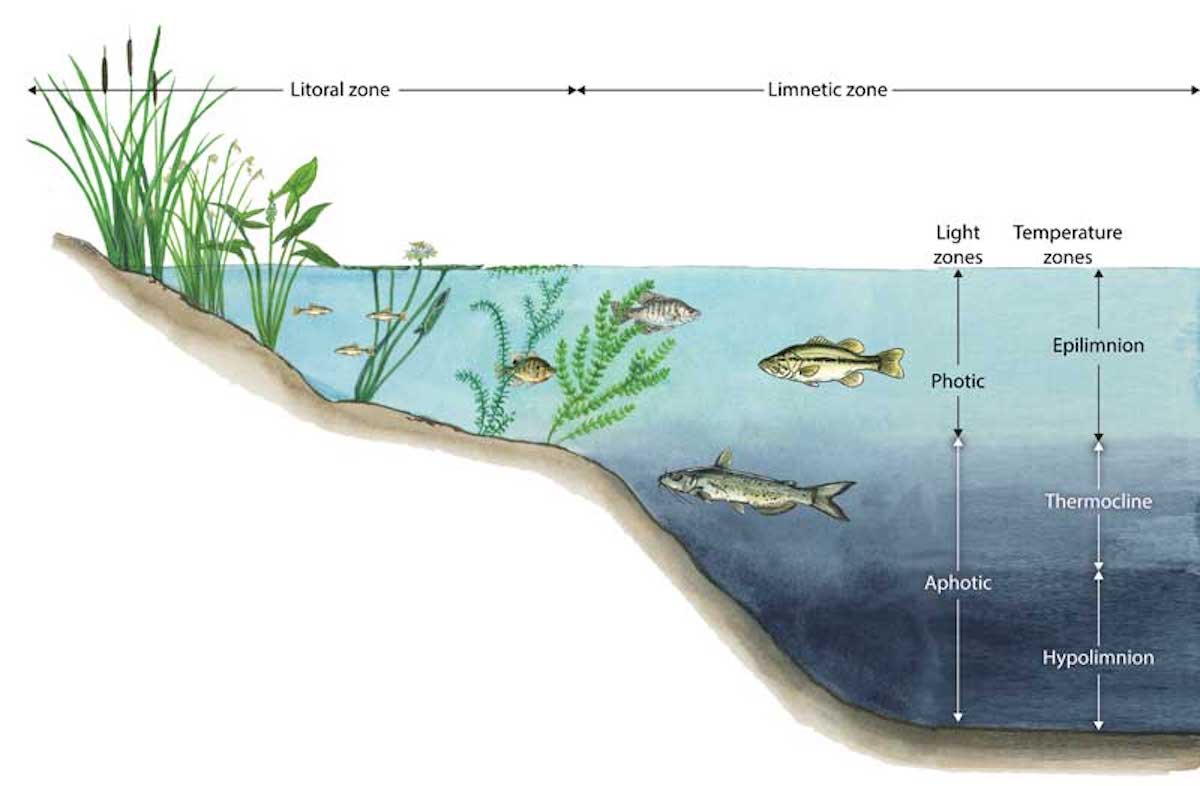
Littoral Zone
This zone is the shore area of the lake or pond. It consists of the area from dry land that slopes into the open water and can be very narrow or very wide. Typically, oligotrophic, or young, bodies of water have narrow Littoral Zones due to their steep sides. Conversely, eutrophic, or old, bodies of water have wide Littoral Zones because of their gentle sloping shoreline and sides.
The Littoral Zone is shallow and gets a lot of nutrients from runoff and non-point source pollution. Therefore, it typically has an abundance of aquatic plant and algae growth. Some other common inhabitants of the Littoral Zone are cattails, reeds, crawfish, snails, insects, zooplankton, and small fish.
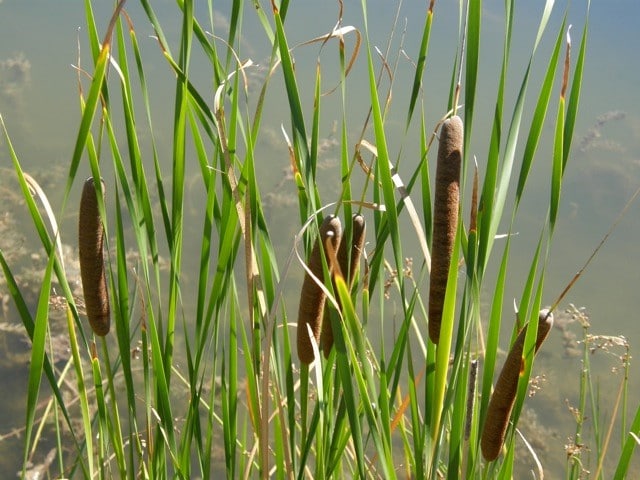
Limnetic Zone
The Limnetic Zone is generally classified as the open water area of the lake or pond. This is a much larger section of water in oligotrophic ponds and lakes than it is in eutrophic bodies of water. Within this zone are two separate sections: the Euphotic Zone and the Profundal Zone.
Euphotic Zone
The Euphotic Zone or Epilimnion (warm water region) is the upper portion of the Limnetic Zone near the surface of the water. This is the portion of water that receives sunlight. The zone ends where the sunlight fails to penetrate the water.
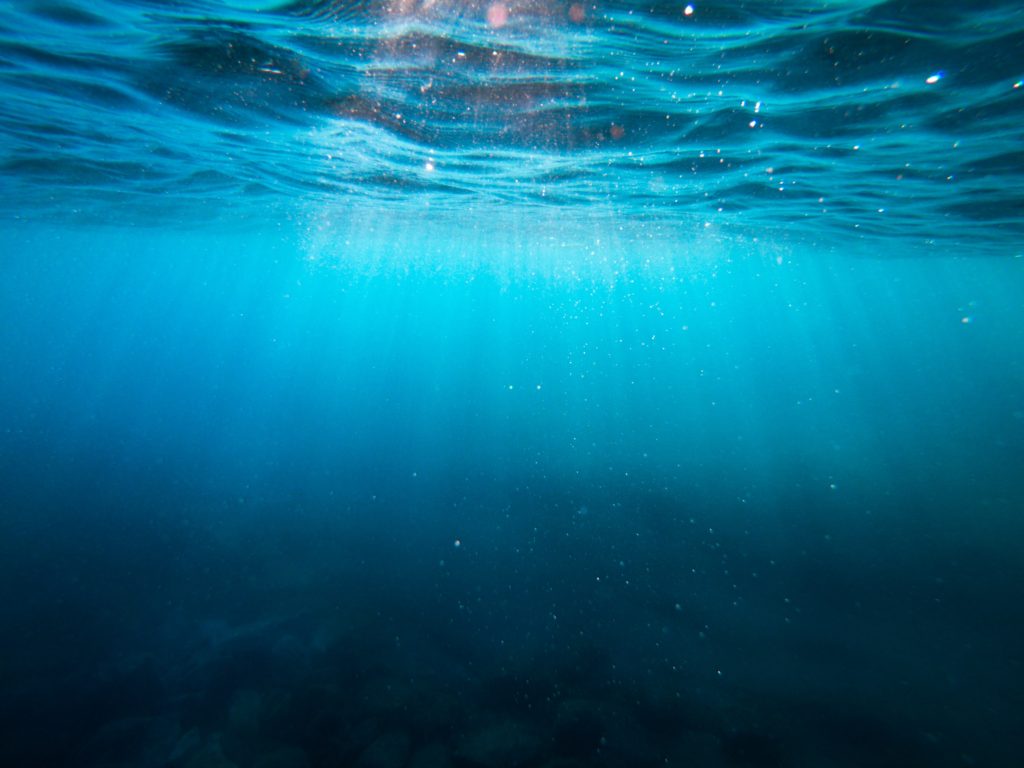
The Euphotic Zone is where algae and other aquatic plants thrive in addition to the Littoral Zone. Typically, this area has a dense fish population because oxygen levels are usually higher due to contact with the air.
Profundal Zone
The Profundal Zone or Hypolimnion (cold water region) can be found below the Euphotic Zone. This zone is located under the thermocline where the sunlight does not penetrate the water. Again, the size of this zone depends on the age and water clarity of the pond or lake. The Profundal Zone typically has a low population of fish because of the lack of oxygen during many parts of the year.
Benthic Zone
The Benthic Zone is the bottom of the pond or lake and consists of organic sediments and soil. As the body of water ages, this zone will increase. It is considered the pond or lake’s digestive system. This zone is where bacteria decompose organic matter from dead algae, aquatic plants, and fish and animal waste.
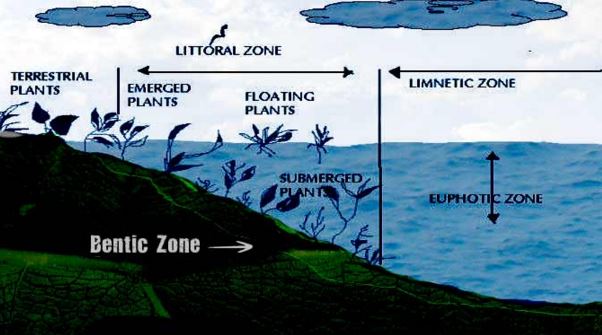
The more organic matter there is in the body of water, the more decomposition takes place. Decomposition can take place either aerobically (in the presence of oxygen) or anaerobically (without oxygen). It is much better to have aerobic decomposition because it is a faster process, and the byproducts are easier to handle.
If you have any questions, please email us or call 715-262-4488.
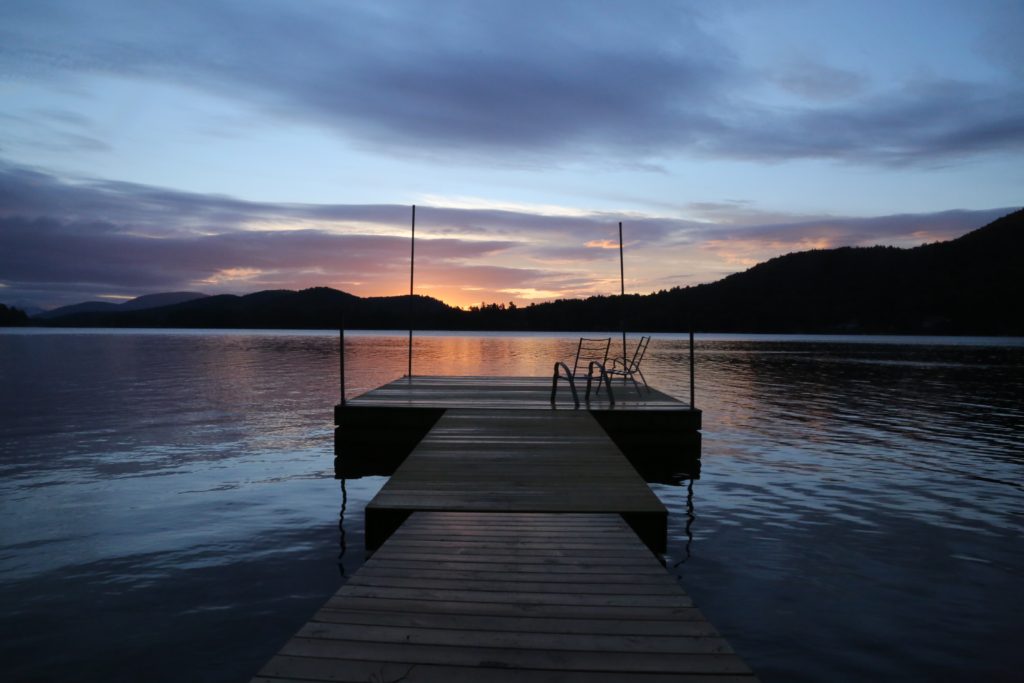
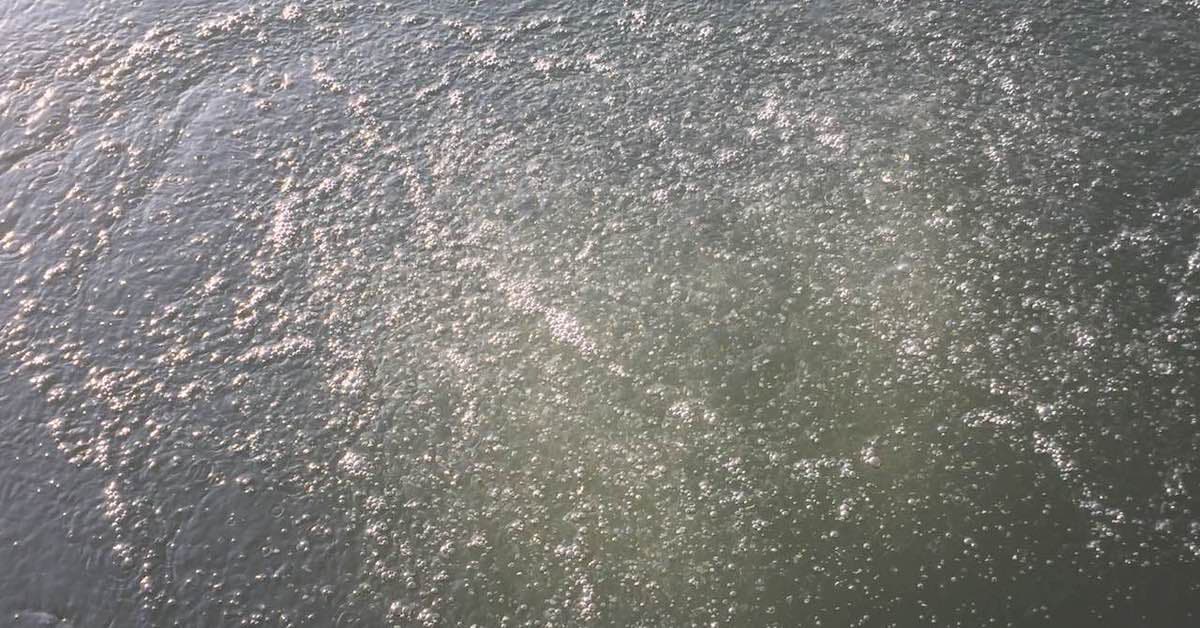 Prévention de la stratification des étangs
Prévention de la stratification des étangs
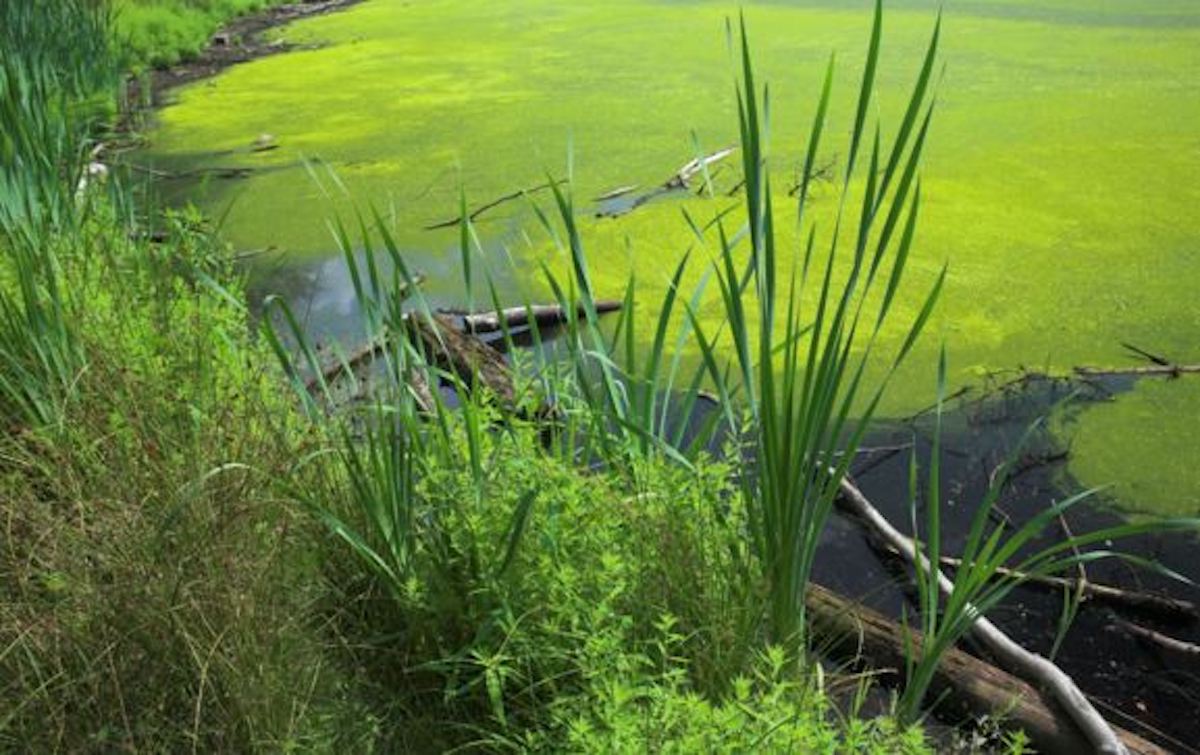 Traitements communs d'algues d'étang
Traitements communs d'algues d'étang
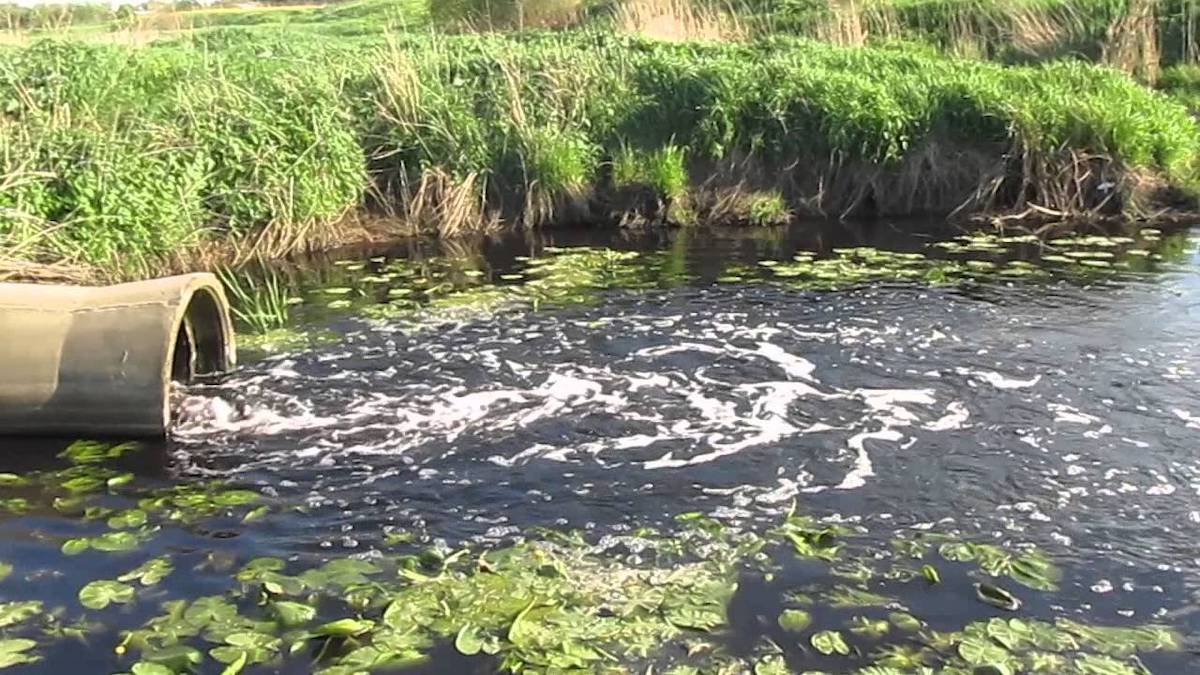 Lutte contre le vieillissement des étangs
Lutte contre le vieillissement des étangs